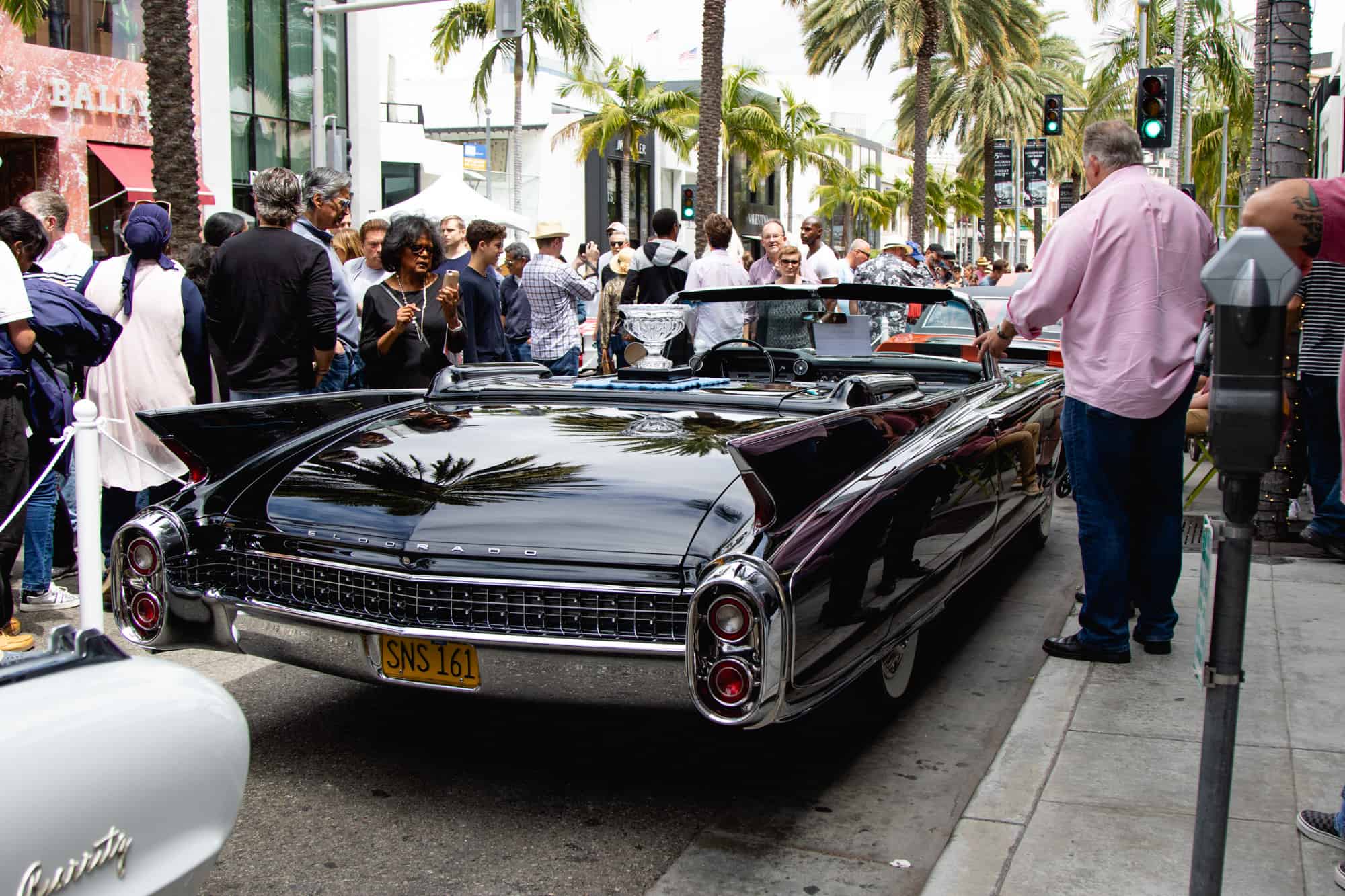“Iconic” has become more of a complementary adjective than its original symbolic meaning. We hear it too often to allow it to have its purposed power.
However, on Father’s Day when rarity meets the best in design wrapped in luxury on three blocks of a street created specifically for all of that, there are few superlatives that would seem out of character.
Even old Hollywood’s favorite top echelon “fabulous” scrambles to acknowledge its accuracy.

One hundred of the most eclectic collection of the best cars gather on Rodeo Drive to represent specific segments of enthusiasm. In celebration of the event’s quarter-century of history, 50 of them wore silver paint. That alone was an astonishing achievement in such a broad range of automotive ideas.
While the event’s name suggests a contest of elegant cars, this is less a contest than a gathering of cars that could individually win awards anywhere.
So how does the car enthusiast culture feel about the luxury fashion venue? Well, 30,000 of them filled the street to a degree that it was difficult to step back and fill your camera screen with a complete car.
Fathers were often proudly celebrated by several generations of their success. A car show crowded by smiling wives — that, alone, is a memorable moment in time.
There was, indeed, one “winner,” but there were many awards given more for recognition of creativity than for quality of restoration — which was universal.






Yes, but Rodeo Drive is in Beverly Hills and very certainly not Hollywood. Huge difference. Huge. And Rodeo Drive could hardly be called a "golden shopping street of Hollywood." To someone from the area, this (and confusing the two) is a rather laughable notion.
As for photographing cars at this show, this notion has never been easy simply due to the nature of cramming thousands of people along with dozens and dozens of vintage cars all onto a street not really designed for such stuff. Rodeo Drive is not a wide thoroughfare.
Still, this event is always a memorable one to attend. But please don’t move it over to Hollywood–which really is a different geographic, governmental, municipal, demographic… and visual location.